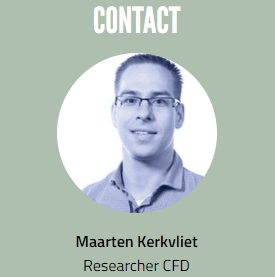ON THE SIMULATION OF LOW REYNOLDS NUMBER FLOWS USING THE RANS EQUATIONS WITH EDDY-VISCOSITY AND TRANSITION MODELS
 Authors: Eça, L., Lopes, R., Kerkvliet, M., Toxopeus, S.L.
Authors: Eça, L., Lopes, R., Kerkvliet, M., Toxopeus, S.L.
Conference/Journal: AIAA SCITECH 2022 Forum, San Diego, CA, USA and Virtual
Date: Jan 4, 2022
DOI: https://doi.org/10.2514/6.2022-2569
This paper presents the results obtained with an incompressible flow solver for the two-dimensional test cases proposed for the first AIAA CFD Transition Modeling and Prediction Workshop: a zero-pressure-gradient flow over a flat plate and the flow around the NLF(1)-0416 airfoil. Simulations were performed with the Reynolds-averaged (time averaging) Navier-Stokes equations using the Shear-Stress Transport (SST) k – ω two-equation, eddy-viscosity model combined with three transition models: XXX, ℽ and Amplification Factor Transport (AFT). The flat plate flow is used to illustrate the dependence of the predicted location of transition from laminar to turbulent flow on the domain size and turbulence quantities inlet boundary conditions. To this end, simulations are performed for the settings adopted by the AIAA CFD Transition Modeling and Prediction and Applied Vehicle Technology Activity 313 Workshops. This simple geometry is also used to illustrate the consequences of specifying large values of inlet eddy-viscosity on the laminar part of the flow calculated with the SST k – ω model with and without transition models. The flow around the NLF(1)-0416 airfoil is simulated in a domain with smaller dimensions than those recommended by the AIAA Workshop instructions. Uncertainties due to the size of the calculation domain are quantified and compared with numerical uncertainties and input uncertainties due to inexact values of the turbulence quantities inlet boundary conditions. Finally, the results obtained with the SST k – ω model with and without transition models are compared with experimental data to illustrate the significant modeling improvement achieved by transition models in low Reynolds numbers flows.
YOU WILL NEED AN ACCOUNT TO VIEW THIS CONTENT
To view this content you will need a login account. If you already have an account you can sign in below. If you want an account then you can create one.
LOGIN: https://www.marin.nl/en/login
CREATE AN ACCOUNT: https://www.marin.nl/en/register

